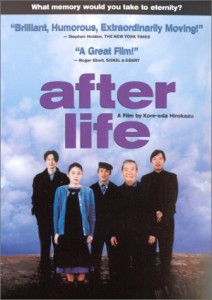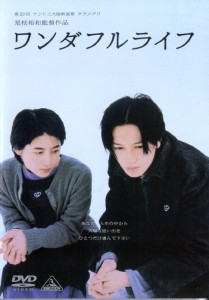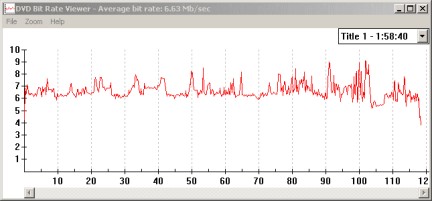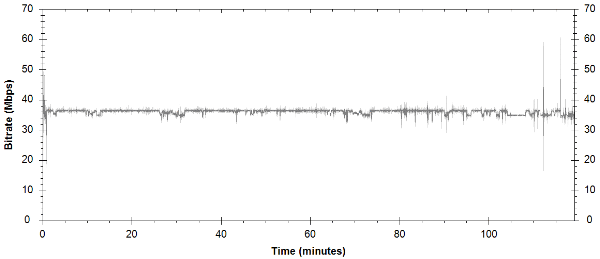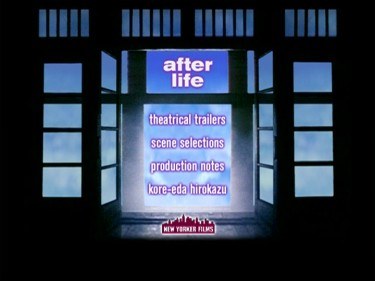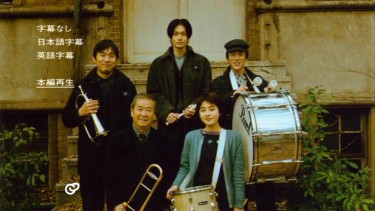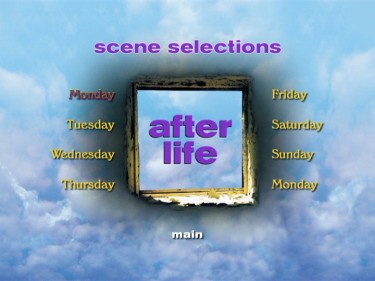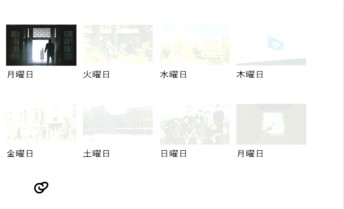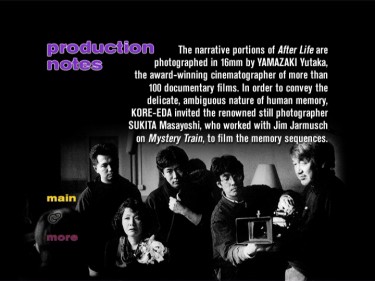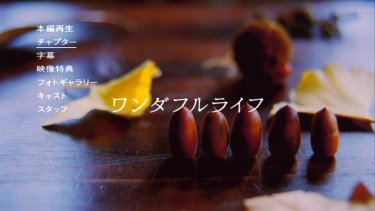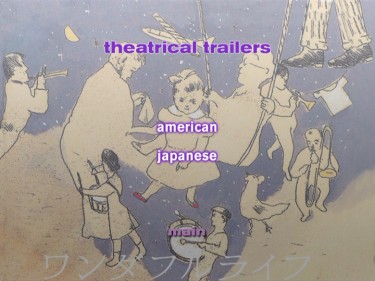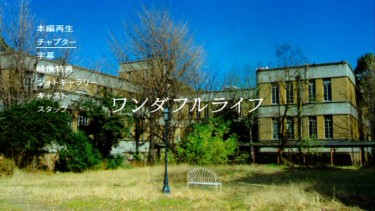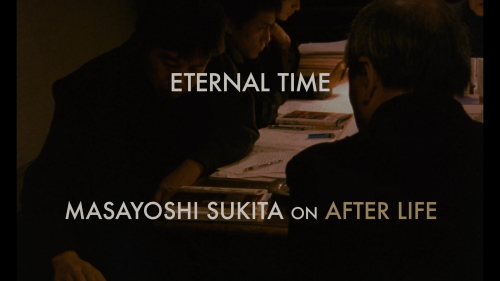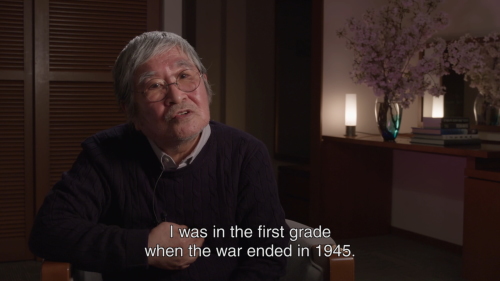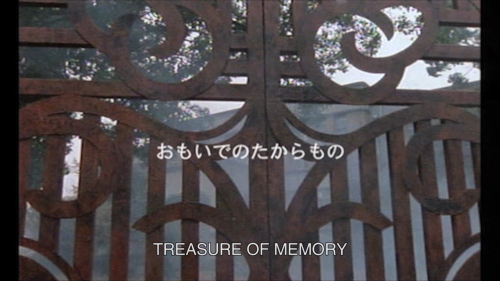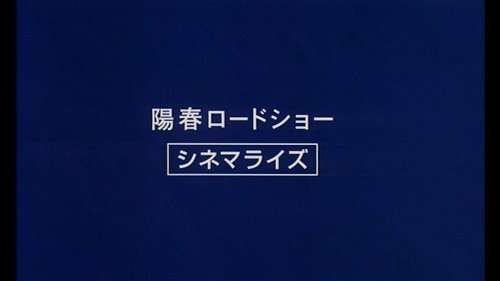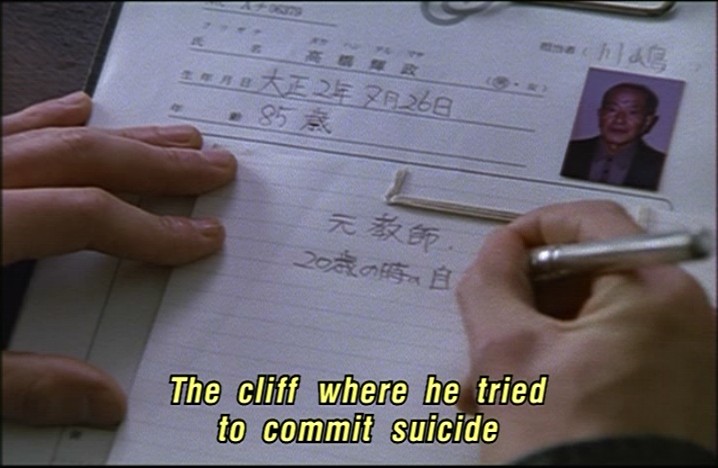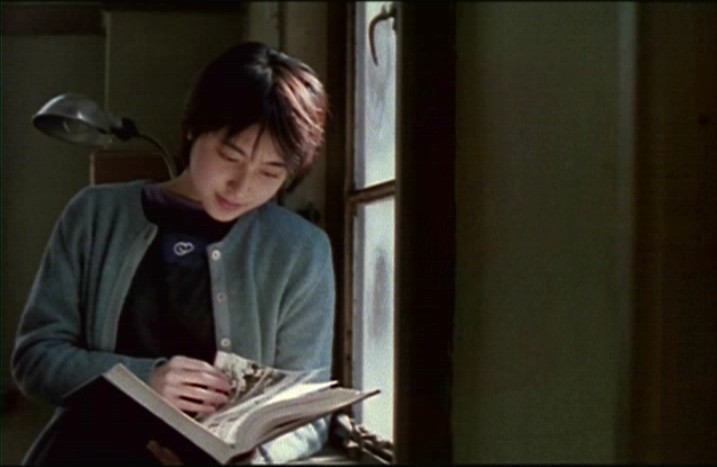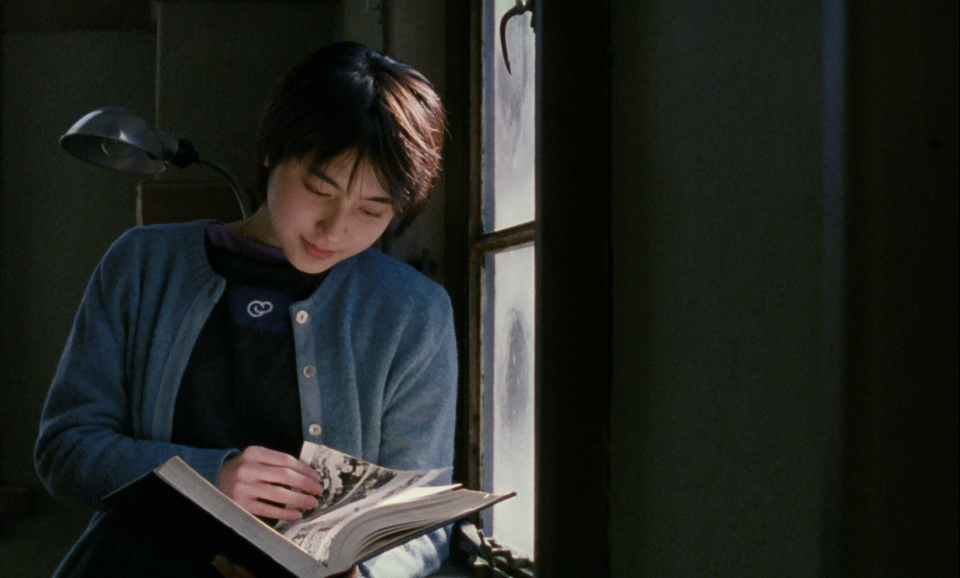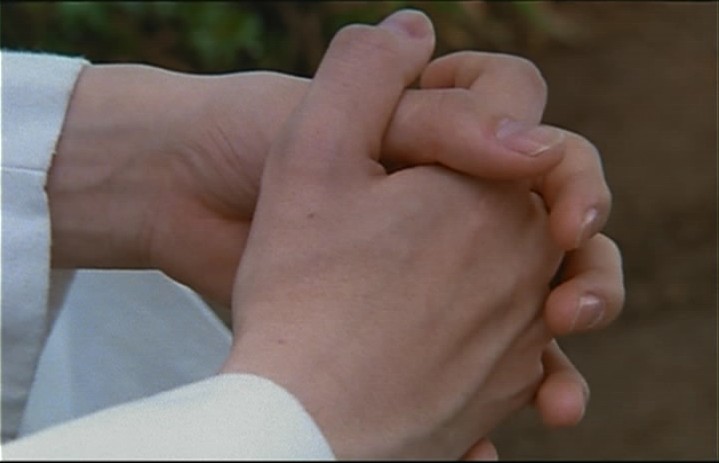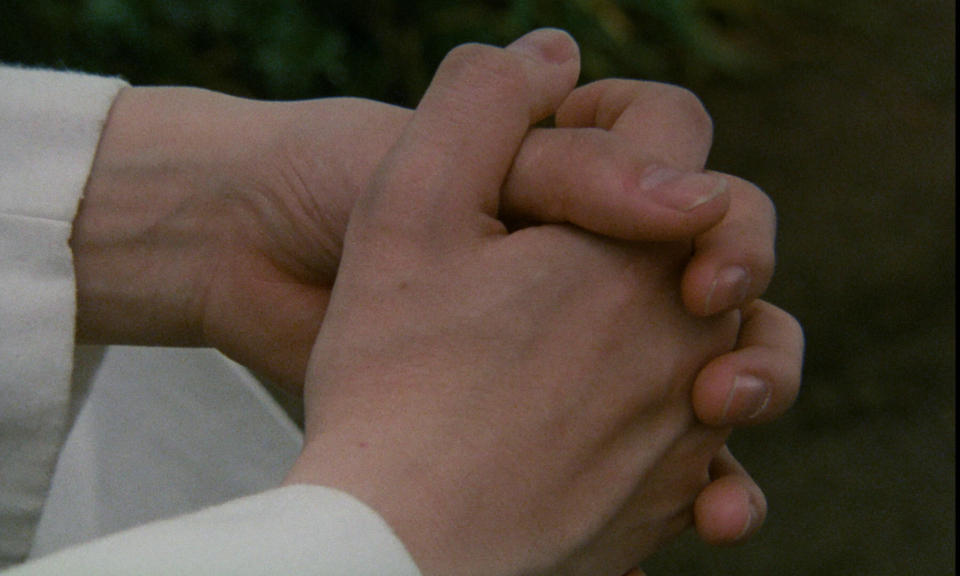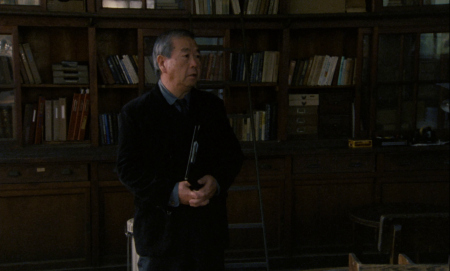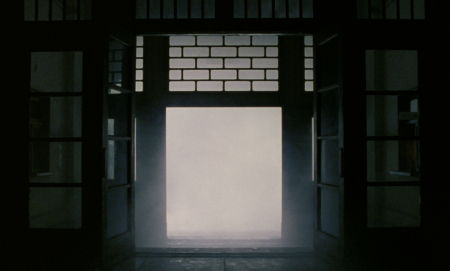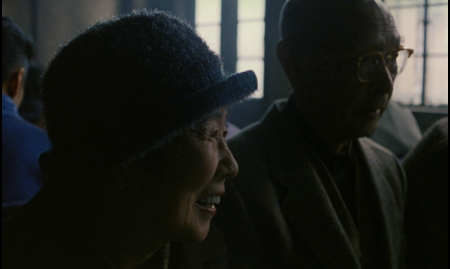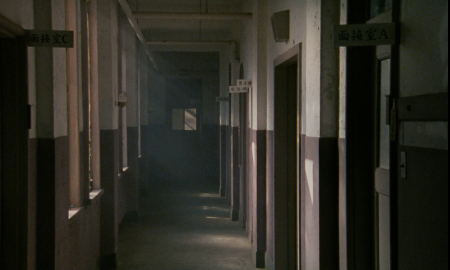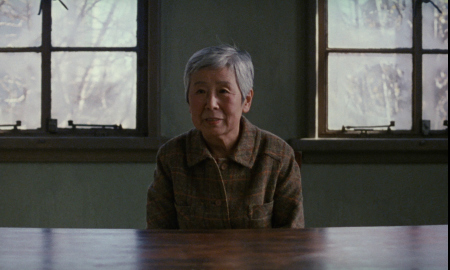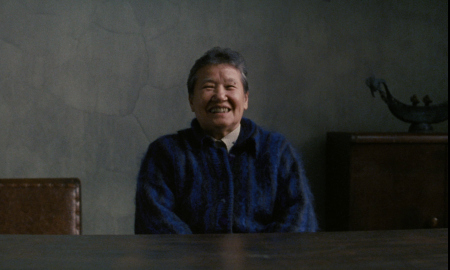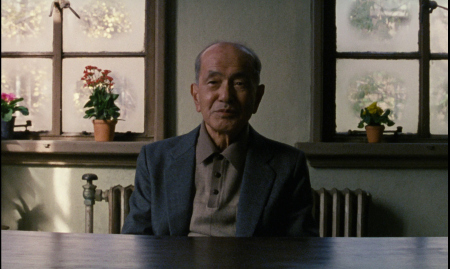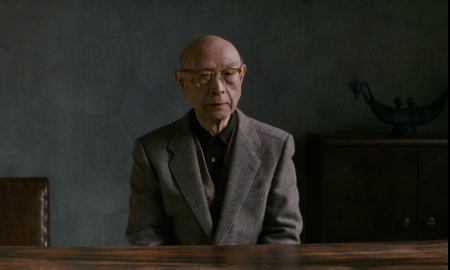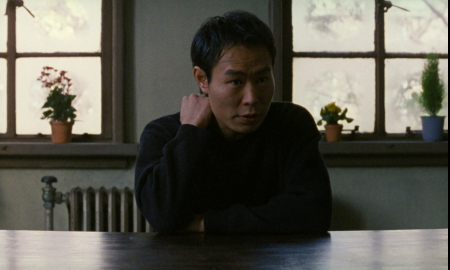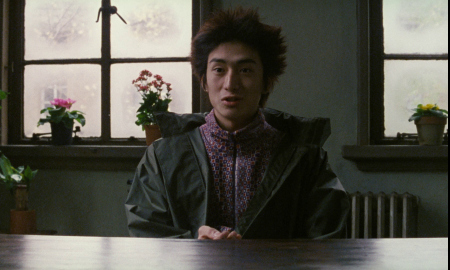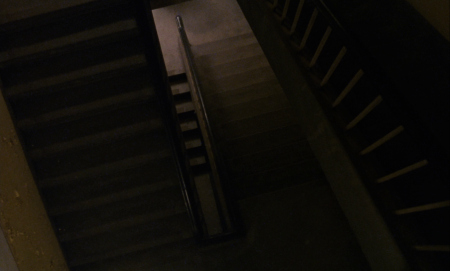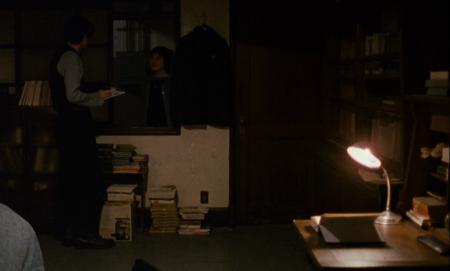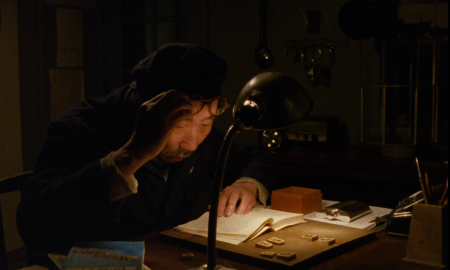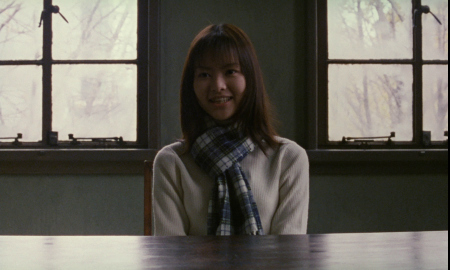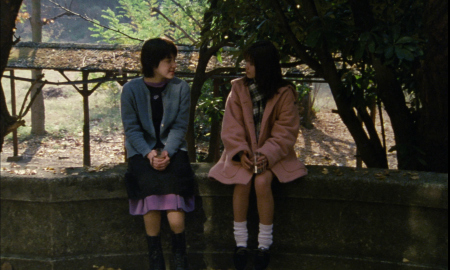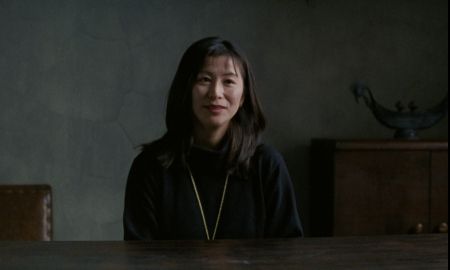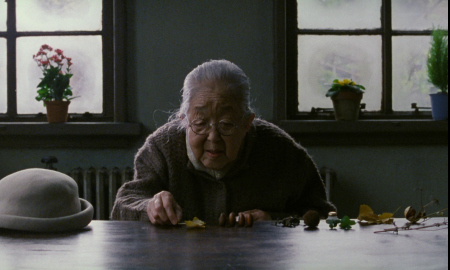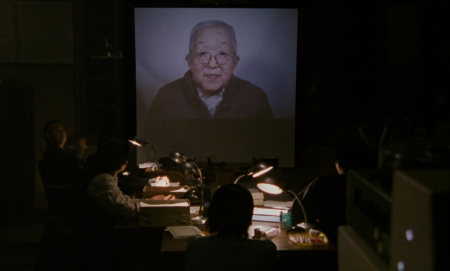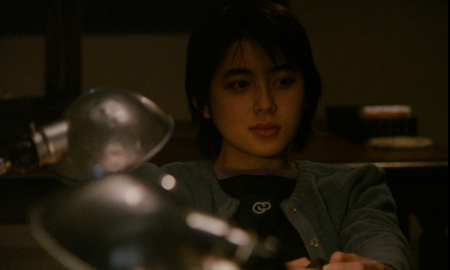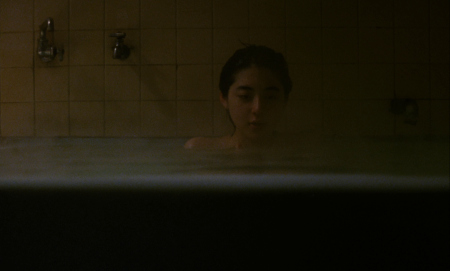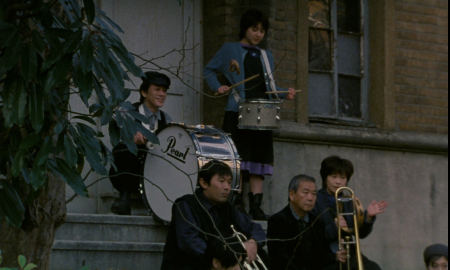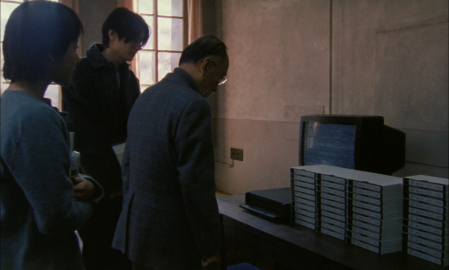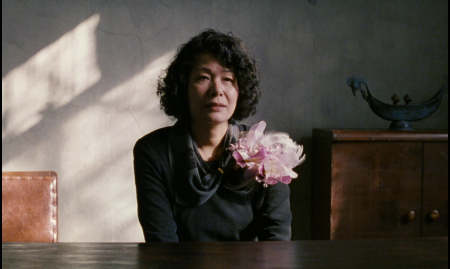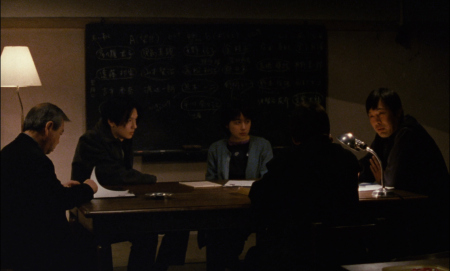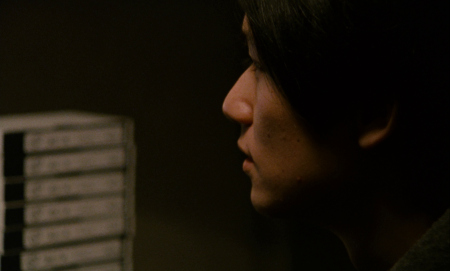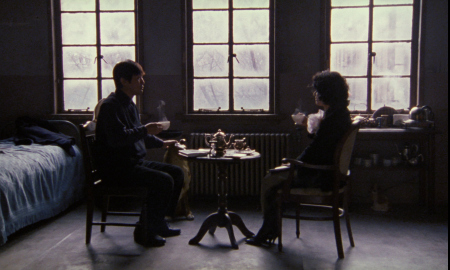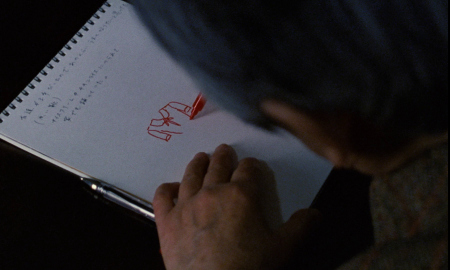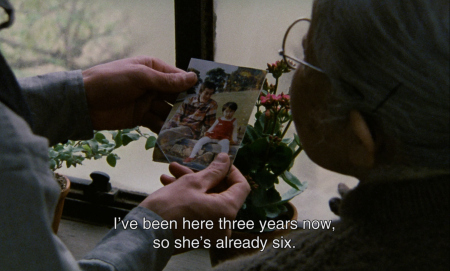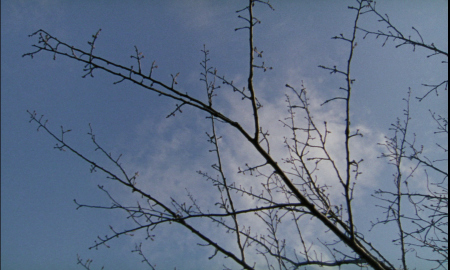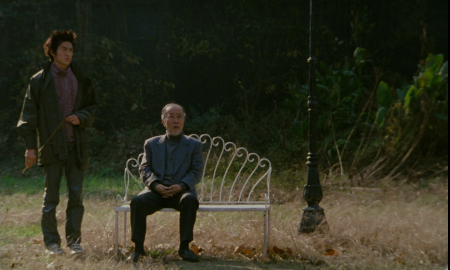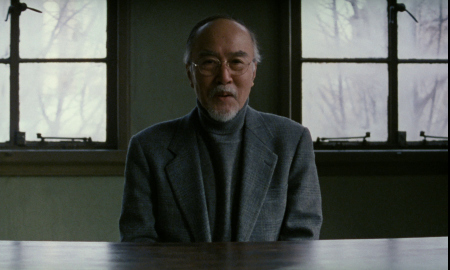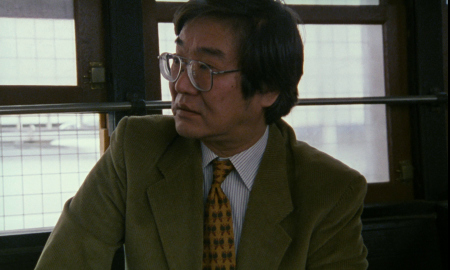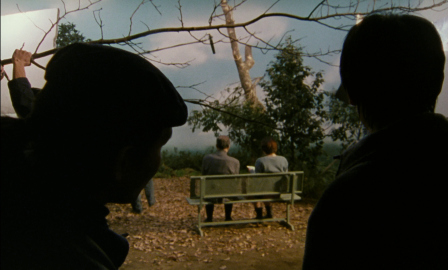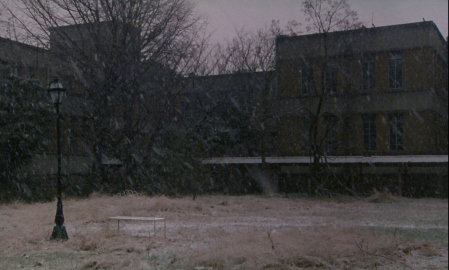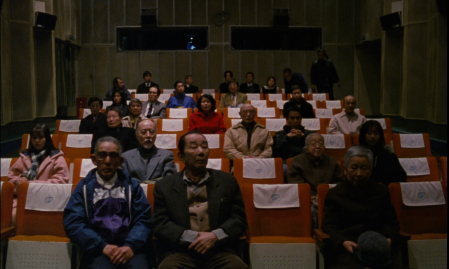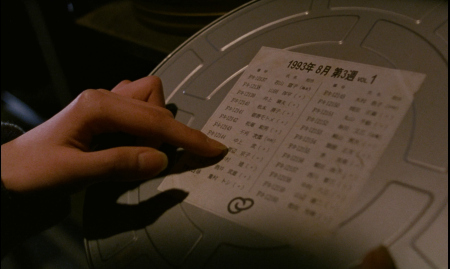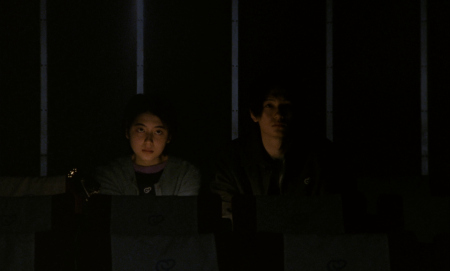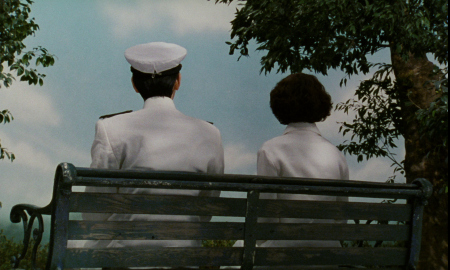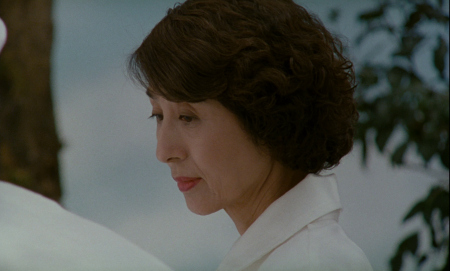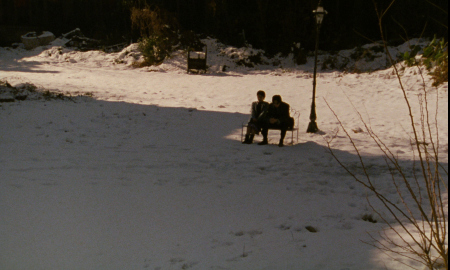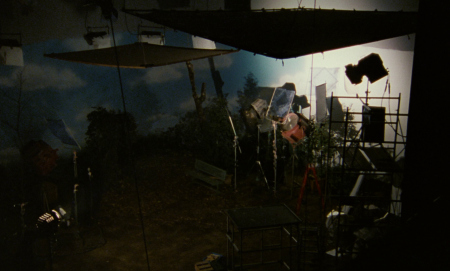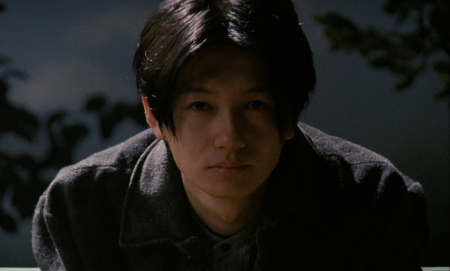|
Firstly, a massive thank you to our Patreon supporters. Your generosity touches me deeply. These supporters have become the single biggest contributing factor to the survival of DVDBeaver. Your assistance has become essential.
What do Patrons receive, that you don't?
1)
Our
weekly
Newsletter
sent to your Inbox every
Monday morning!
Please consider keeping us in existence with a couple of dollars or more each month (your pocket change!) so we can continue to do our best in giving you timely, thorough reviews, calendar updates and detailed comparisons. Thank you very much. |
![]()
![]()

![]()
![]()
|
Search DVDBeaver |
S E A R C H D V D B e a v e r |
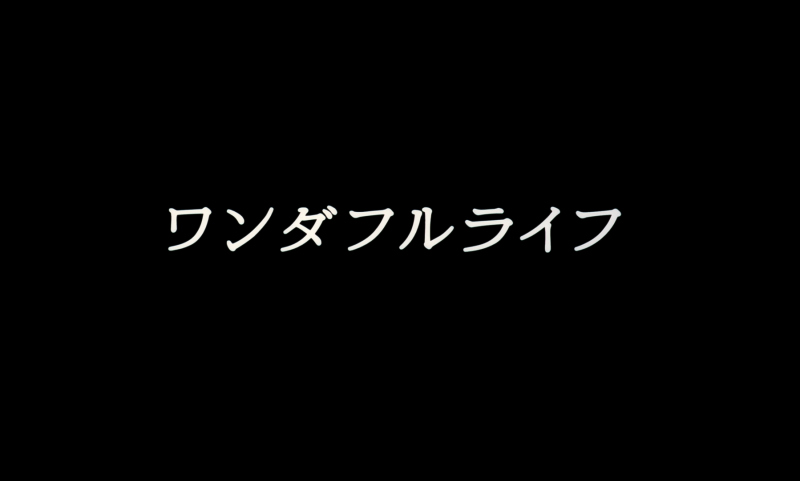
(aka 'Wandafuru raifu' or 'After Life' or 'Afterlife' or 'Wonderful Life')
directed
by Hirokazu Koreeda
Japan 1998
| The international breakthrough by Hirokazu
Kore-eda that asks, If you could choose only one memory to hold on
to for eternity, what would it be? If you
could choose only one memory to hold on to for eternity, what would
it be? That’s the question at the heart of Hirokazu Kore-eda’s
revelatory international breakthrough, a bittersweet fantasia in
which the recently deceased find themselves in a limbo realm where
they must select a single cherished moment from their life to be
recreated on film for them to take into the next world. *** The second feature from the maker of the exquisite Maborosi returns to the theme of the relationship between life and death, but reverses the perspective. It is set in a limbo that looks like a slightly shabby school, where counsellors help new arrivals choose their most precious memory which is then recreated on a film to accompany them to eternity. The movie is about how we look back and make sense of our lives. With a strong documentary feel (many of the cast are non-professionals evidently drawing on personal experience), the film succeeds partly as an amusing and richly affecting portrait of what constitutes happiness for a wide range of modern Japanese; it is also, in passing, a little tribute to the way cinema connects with our dreams. Most poignantly, however, as it charts a revelatory encounter between a counsellor and one of his charges, it offers a subtle tribute to the healing power of love. |
Posters
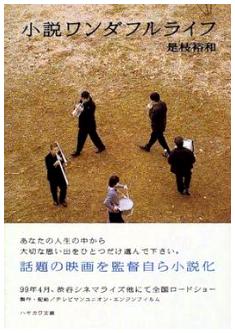 |
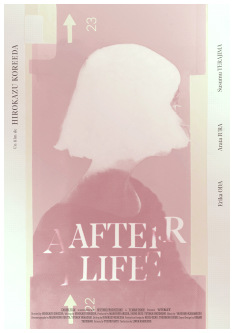 |
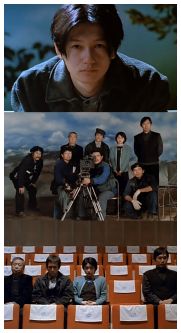 |
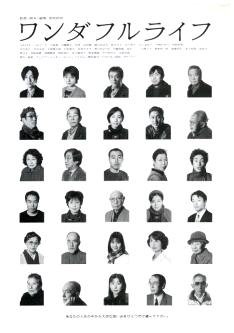 |
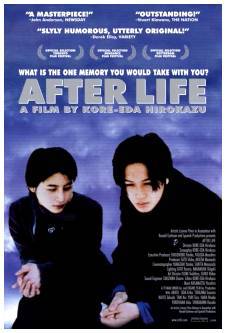 |
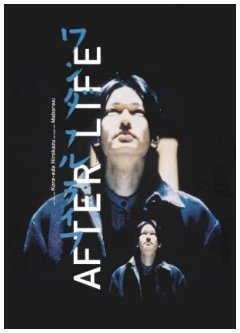 |
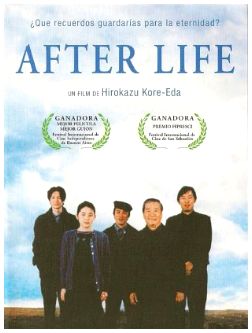 |
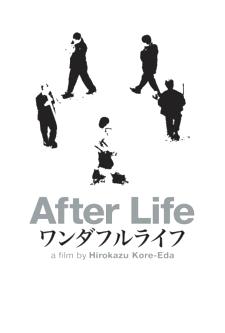 |
Theatrical Release: September 11th, 1998 - Toronto Film Festival
Reviews More Reviews DVD Reviews
Comparison:
New Yorker - Region 1 - NTSC vs. Bandai - Region 2 - NTSC vs. Criterion - Region 'A' - Blu-ray
Big thanks to Trond Trondsen of Masters of Cinema.org for the Bandai DVD Screen Caps!
| Box Covers |
|
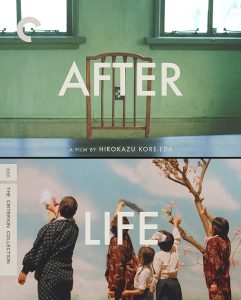
BFI came out with a Blu-ray in the UK in 2020: BONUS CAPTURES: | |
| Distribution |
New Yorker Region 1 - NTSC |
Bandai (Japan)
Region 2 - NTSC |
Criterion Spine #1089 - Region 'A' - Blu-ray |
| Runtime | 1:58:28 | 1:58:40 | 1:59:17.066 |
| Video |
1.53:1 Cropped |
1.66:1 Original Aspect Ratio 16X9 enhanced |
1. 66:1 1080P Dual-layered Blu-rayDisc Size: 47,703,394,628 bytesFeature: 36,232,445,952 bytesVideo Bitrate: 3 6.11 MbpsCodec: MPEG-4 AVC Video |
|
NOTE: The Vertical axis represents the bits transferred per second. The Horizontal is the time in minutes. |
|||
| Bitrate:
New Yorker
|
|
||
| Bitrate:
Bandai |
|
||
| Bitrate:
Criterion
Blu-ray |
|
||
| Audio | Japanese (Dolby Digital 2.0) |
Japanese (Dolby Digital 2.0) |
LPCM Audio Japanese 1152
kbps 1.0 / 48 kHz / 1152 kbps / 24-bit Dolby Digital Audio English 192 kbps 1.0 / 48 kHz / 192 kbps / DN -31dB |
| Subtitles | Yellow - English (non-removable) | English, Japanese and none | English, none |
| Features |
Release Information: Studio: New Yorker Films
Aspect Ratio: DVD
Release Date: August 29, 2000
Chapters 8 |
Release Information: Studio: Bandai (Japan) Aspect Ratio:
DVD
Release Date: March 28th, 2003 Chapters 8 |
Release Information: Studio: Criterion
1. 66:1 1080P Dual-layered Blu-rayDisc Size: 47,703,394,628 bytesFeature: 36,232,445,952 bytesVideo Bitrate: 3 6.11 MbpsCodec: MPEG-4 AVC Video
Edition Details:
• New
audio commentary featuring film scholar Linda C. Ehrlich
Transparent Blu-ray Case Chapters 23 |
| Comments: |
NOTE:
The below
Blu-ray
captures were taken directly from the
Blu-ray
disc.
NOTE: (*) The final sequence of the film, when the memories are projected, are presented in 35 mm see HERE, in contrast to the intentional "cinema verite" feel of the 16 mm used for the bulk of the film. NOTE: We have added 42 more large resolution Blu-ray captures (in lossless PNG format) for DVDBeaver Patrons HERE On their Blu-ray, Criterion use a linear PCM mono track (24-bit) in the original Japanese language. After Life has non-diagetic music (sound in a film that doesn’t originate from the world of the film.) There is no aggression, almost exclusively dialogue-driven and the audio transfer is authentically flat, and consistent, with a score credited to Yasuhiro Kasamatsu (who also has an acting credit in the film) but there is music played live and, the sounds of a bell on a girl's backpack, and through the end credits among other usage. Dialogue is clean, consistent and expressed subtly. Criterion offer optional English subtitles on their Region 'A' Blu-ray. The Criterion Blu-ray offers the a new audio commentary by Linda C. Ehrlich, PhD, author of The Films of Kore-eda Hirokazu: An Elemental Cinema. She talks about all facets of the film including the non-professional actors used, the set, shots of hands, empty spaces and comparisons to Yasujiro Ozo. She discusses memory (forming our identity), how some of the participants chose melancholy memories to share. She pauses while we watch scenes together and she discusses many of the director's other works, references to trains (common in the Hirokazu Kore-eda's work,) identifying actors and making valid comparisons. There are also about an hour's worth of interviews; with photographer and cinematographer Masayoshi Sukita, and separately, director of photography Yutaka Yamazaki recorded by the Criterion Collection in Tokyo in 2021. There is also a new interview with writer-director Hirokazu Kore-eda recorded by the Criterion in Seoul, South Korea. There are also a 1/4 hour's worth of deleted scenes entitled 'Treasure of Memory' and there is a trailer. The Blu-ray package contains a liner notes booklet with an essay by novelist Viet Thanh Nguyen. Hirokazu Kore-eda's "After Life" prosaically explores the relationship between memory and persona through his meditative use of gentle cinema. What is remarkable is how impressively fluid the film is expressing the perceptions of the past with personal values. It's brilliant cinema - often, appropriately, considered a masterpiece. The premise itself is enough to cause one to reflect for hours. The Criterion Blu-ray, its relevant interviews and commentary are a must-own for cinephiles everywhere. Our strongest recommendation! *** ON THE DVDs (2004): The New Yorker disc is quite cropped on the left edge and is not as sharp as the Bandai release. I also see some contrast boosting in the Region 1 and quite a lot of film grain the anamorphic Region 2. The New Yorker disc has burned in yellow subtitles. DVDBeaver recommends the Region 2 Bandai release which is an easy winner over the New Yorker.
The film was shot on 16
mm(*), and it shows (and it should show). In an attempt to clean up
the associated graininess, New Yorker has apparently run the film
through a digital low-pass (smoothing) filter, causing a general
blurring of the image and a lower required bitrate. To
compensate for this decrease in sharpness, New Yorker then applied
edge enhancement, which only serves to cause further ugliness (see for
example the "halo" around the back of the chair in the first
screenshot below).
|
Recommended Reading for Asian Film Fans (CLICK COVERS or TITLES for more information)
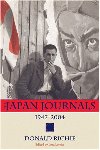 |
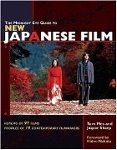 |
 |
 |
 |
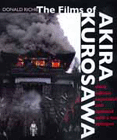 |
 |
 |
 |
|
The Japan Journals : 1947-2004, by Donald Richie |
The Midnight Eye Guide to New Japanese Film by Tom Mes and Jasper Sharp |
Kon Ichikawa (Cinematheque Ontario Monographs) by James Quandt, Cinematheque Ontario |
Shohei Imamura (Cinematheque
Ontario Monographs, No. 1) by James Quandt |
Eros Plus Massacre: An
Introduction to the Japanese New Wave Cinema
(Midland Book, Mb 469) by David Desser |
The Films of Akira Kurosawa by Donald Ritchie |
by Yasujiro Ozu, Kogo Noda, Donald Richie, Eric Klestadt |
Ozu by Donald Ritchie |
A Hundred Years of Japanese Film by Donald Richie |
Check out more in "The Library"
DVD Menus
(New
Yorker
- Region 1 - NTSC - LEFT vs. Bandai - Region 2 - NTSC - RIGHT)
|
|
|
|
|
|
|
|
|
|
|
|
Criterion Spine #1089 - Region 'A' - Blu-ray
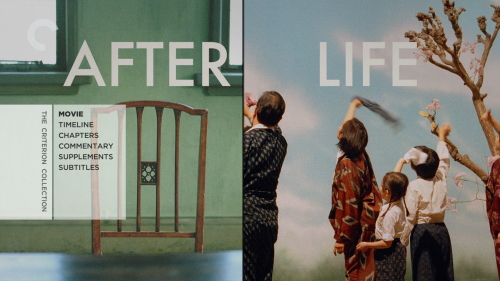 |
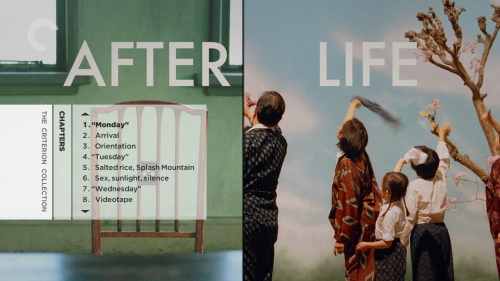 |
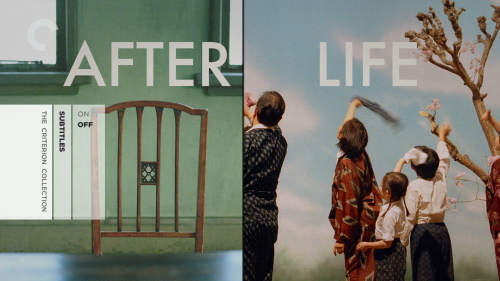 |
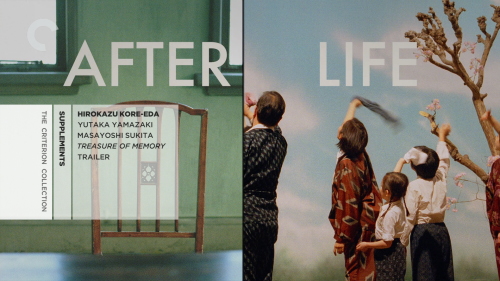 |
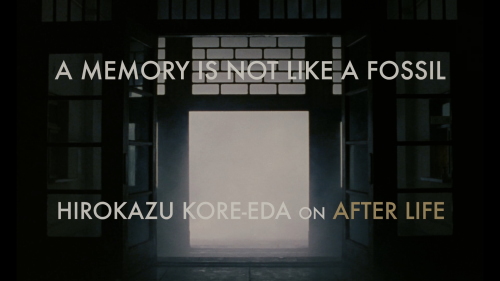 |
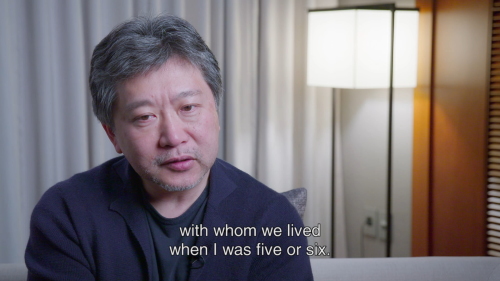 |
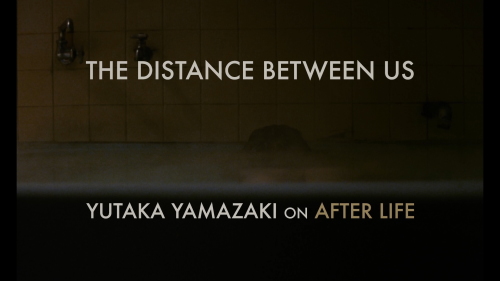 |
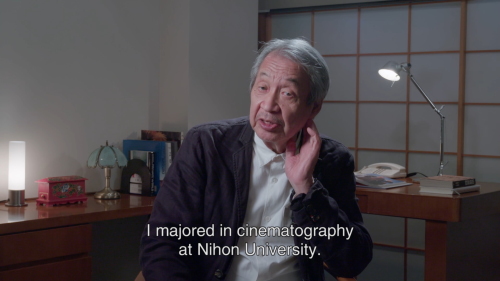 |
|
|
|
|
|
|
CLICK EACH BLU-RAY CAPTURE TO SEE ALL IMAGES IN FULL 1920X1080 RESOLUTION
|
1) New Yorker - Region 1 - NTSC - TOP 2) Criterion Spine #1089 - Region 'A' - Blu-ray BOTTOM |
|
|
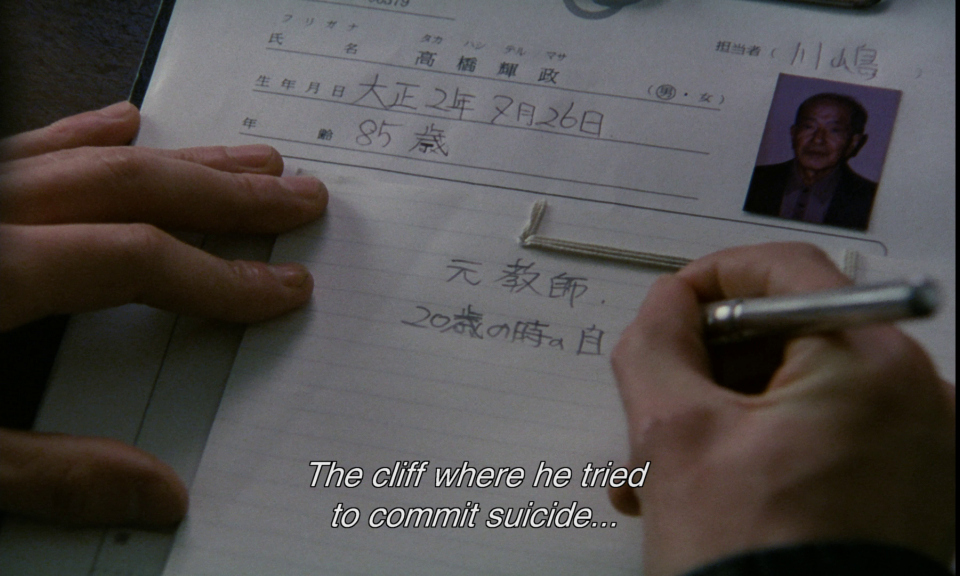 |
|
1) New Yorker - Region 1 - NTSC - TOP 2) Bandai - Region 2 - NTSC - MIDDLE 3) Criterion Spine #1089 - Region 'A' - Blu-ray BOTTOM |
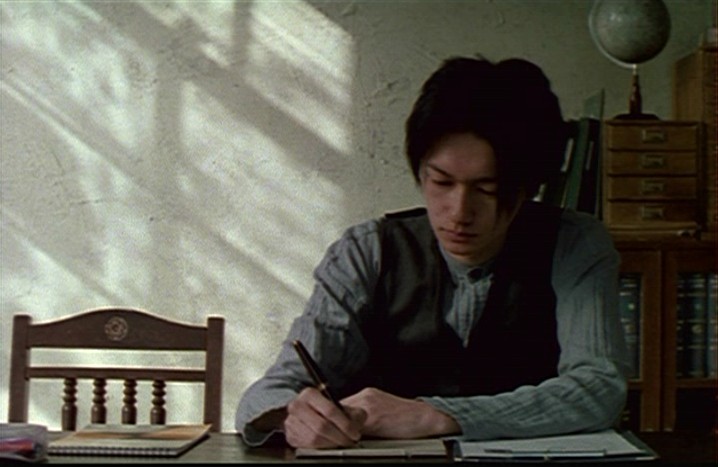 |
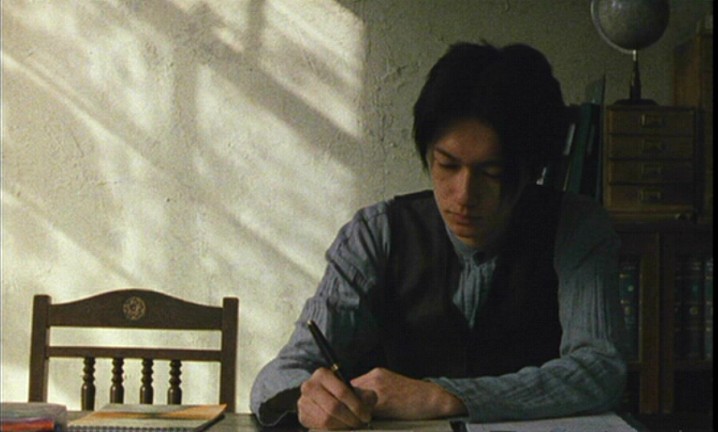 |
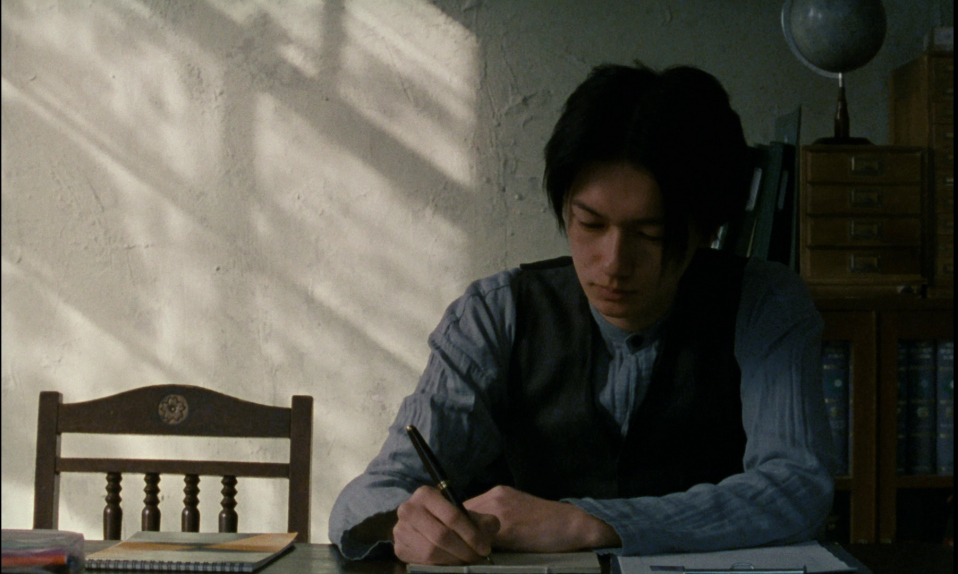 |
|
1) New Yorker - Region 1 - NTSC - TOP 2) Bandai - Region 2 - NTSC - MIDDLE 3) Criterion Spine #1089 - Region 'A' - Blu-ray BOTTOM |
|
|
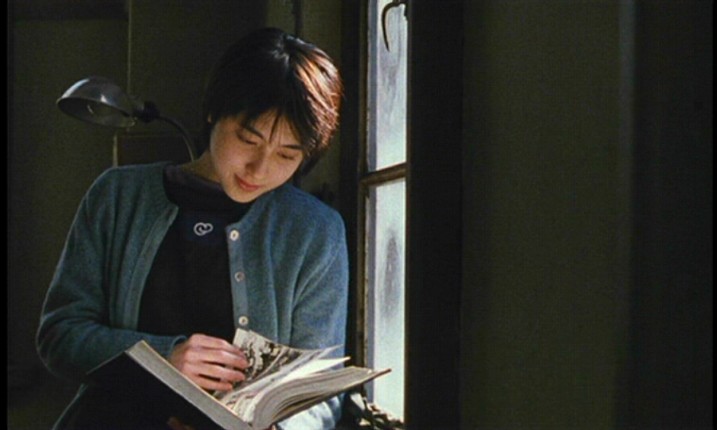 |
|
1) New Yorker - Region 1 - NTSC - TOP 2) Bandai - Region 2 - NTSC - MIDDLE 3) Criterion Spine #1089 - Region 'A' - Blu-ray BOTTOM |
|
|
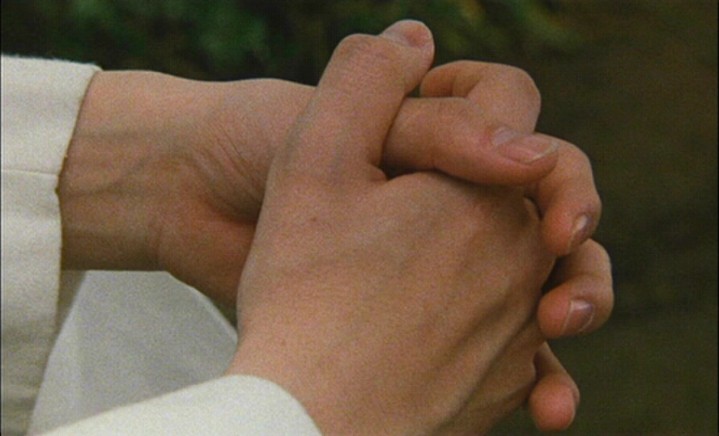 |
Report Card:
|
Image: |
Blu-ray |
|
Sound: |
Blu-ray |
| Extras: | Blu-ray |
| Box Covers |
|

BFI came out with a Blu-ray in the UK in 2020: BONUS CAPTURES: | |
| Distribution |
New Yorker Region 1 - NTSC |
Bandai (Japan)
Region 2 - NTSC |
Criterion Spine #1089 - Region 'A' - Blu-ray |



